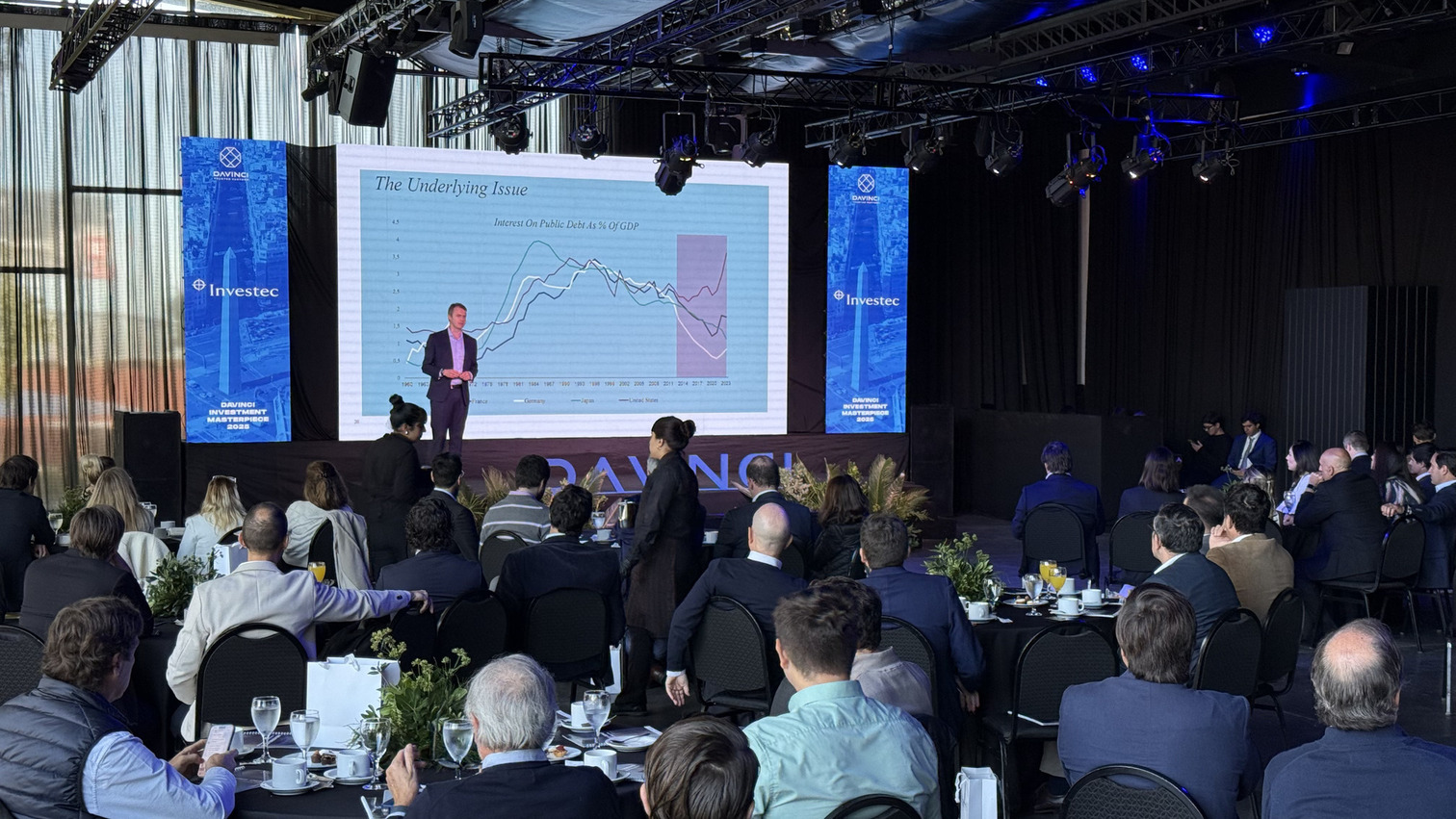Against the backdrop of a highly particular moment in international markets—driven by the aggressive trade policy adopted by the White House in the United States—the message of DAVINCI Trusted Partner during its South American tour was to seek investment opportunities and ideas beyond U.S. borders. While the U.S. remains relevant, experts gathered by the Rio de la Plata–based firm in front of investor groups in four of Latin America’s main financial capitals pointed out that there are other alternatives such as Europe, Japan, and semi-liquid assets.
The sixth edition of Investment Masterpiece, the firm’s flagship event, took place last week across the financial districts of São Paulo, Buenos Aires, Santiago de Chile, and Montevideo—on May 12, 13, 14, and 15, respectively—presenting equity, multi-asset, and semi-liquid strategies as options to meet three key goals defined by the distribution house: diversification, reduced portfolio volatility, and uncorrelated investments.
“It is necessary to globalize portfolios,” said James Whitelaw, Managing Director at DAVINCI, adding that while they are not eliminating U.S. exposure, they are seeing a variety of opportunities outside the United States.
Broadening the View
“These are very turbulent times,” warned Christopher Holdsworth, Chief Investment Strategist at Investec, as he took the stage. The underlying issue, he explained, is the rising cost of U.S. government funding, with 3.5% to 4% of GDP currently going to pay financial interest.
This has led to tensions within the Department of Government Efficiency (DOGE), which has attempted—questionably—to cut fiscal spending and impose tariffs worldwide. “That means some forms of tariffs are here to stay,” said Holdsworth.
Warning signs are also emerging. Although retail investors have continued to favor U.S. equities, consumer confidence has declined, with unemployment and inflation as top concerns. According to Holdsworth, “hard data will start to weaken,” noting recent signs of dwindling household excess savings and rising debt defaults.
“The main damage is being felt in the U.S.,” he said during his presentation. However, this also creates opportunities: although U.S.-specific issues typically weaken the dollar, the greenback has remained strong. For Investec, this indicates “there are opportunities outside the U.S.” and that “we must focus our attention elsewhere.”
Given the overvaluation of U.S. assets—while prices elsewhere seem more “normal”—and the unusual dynamics of the U.S. dollar and Treasury bonds, the latter no longer appear to serve as a traditional safe haven, although they may still function as a store of value, he noted.
Consequently, Investec has been reducing U.S. exposure in its balanced and cautious multi-asset strategies, placing greater emphasis on European, emerging market, and Japanese assets, with a particular interest in the yen.
European Appeal
In this context, as investors struggle to interpret U.S. market dynamics, one region is gaining prominence in market conversations: Europe.
The continent, explained Niall Gallagher, Investment Manager of European Equities at Jupiter Asset Management, “is at a very interesting juncture,” increasing its attractiveness as an investment destination.
In addition to valuations—more compelling than those in the U.S.—the London-based firm sees a potential tailwind from capital flows. As U.S. equities have become more prominent in global indices, the weight of European and Japanese stocks has declined.
What does this mean? “If there’s a major shift in flows away from the U.S., Europe is well positioned,” Gallagher stated. Moreover, the Old Continent offers a “relatively diverse market,” which becomes especially important when the market’s concentration—particularly among U.S. tech giants—grows “increasingly uncomfortable.”
Santiago Mata, Sales Manager for LATAM and U.S. Offshore at the firm, added that the political uncertainty in the U.S. “is something we’ll have to get used to,” especially at a time when the correlation between stocks and bonds is challenging the traditional 60/40 portfolio model.
Private Markets
Alternative assets—a category of growing interest among private banks and wealth management channels—also held a prominent place at DAVINCI’s Masterpiece, represented by Brookfield Oaktree Wealth Solutions.
Óscar Isoba, Managing Director and U.S. Offshore and LATAM Head at the firm, emphasized the crucial role semi-liquid strategies have played in democratizing this asset class.
Addressing Latin American audiences that are increasingly turning to private markets in search of higher returns and lower volatility, Isoba stressed the role of advisors in accelerating this trend. While Latin America still lags in adopting these strategies, it is a phenomenon already underway in the region, he explained.
“We are bringing institutional solutions to the wealth segment,” Isoba highlighted. For investors beginning to build their alternative portfolios, he recommended starting with private credit—a category he described as historically “consistent,” even during periods of higher inflation.
The Power of Technology
The event also underscored the importance of technology in asset management. Michael Heldmann, CIO of Systemic Equity at Allianz Global Investors—together with its partner Voya Investment Management—discussed the Best Styles Global Equity strategy, a global equity fund that leverages big data, artificial intelligence, and computing power to optimize returns.
How does it work? Through the human expertise of the investment professionals involved and the technological systems applied to their investment process over the past 25 years—with strong historical results—the strategy identifies different types of companies. These include “cheap” assets, firms involved in positive trends, and defensive companies.
They have thus categorized five investment styles: value, momentum, revisions, growth, and quality.
Technology has also enabled them to minimize “unrewarded risks”—such as currency fluctuations and commodity prices—while enhancing returns through artificial intelligence.




